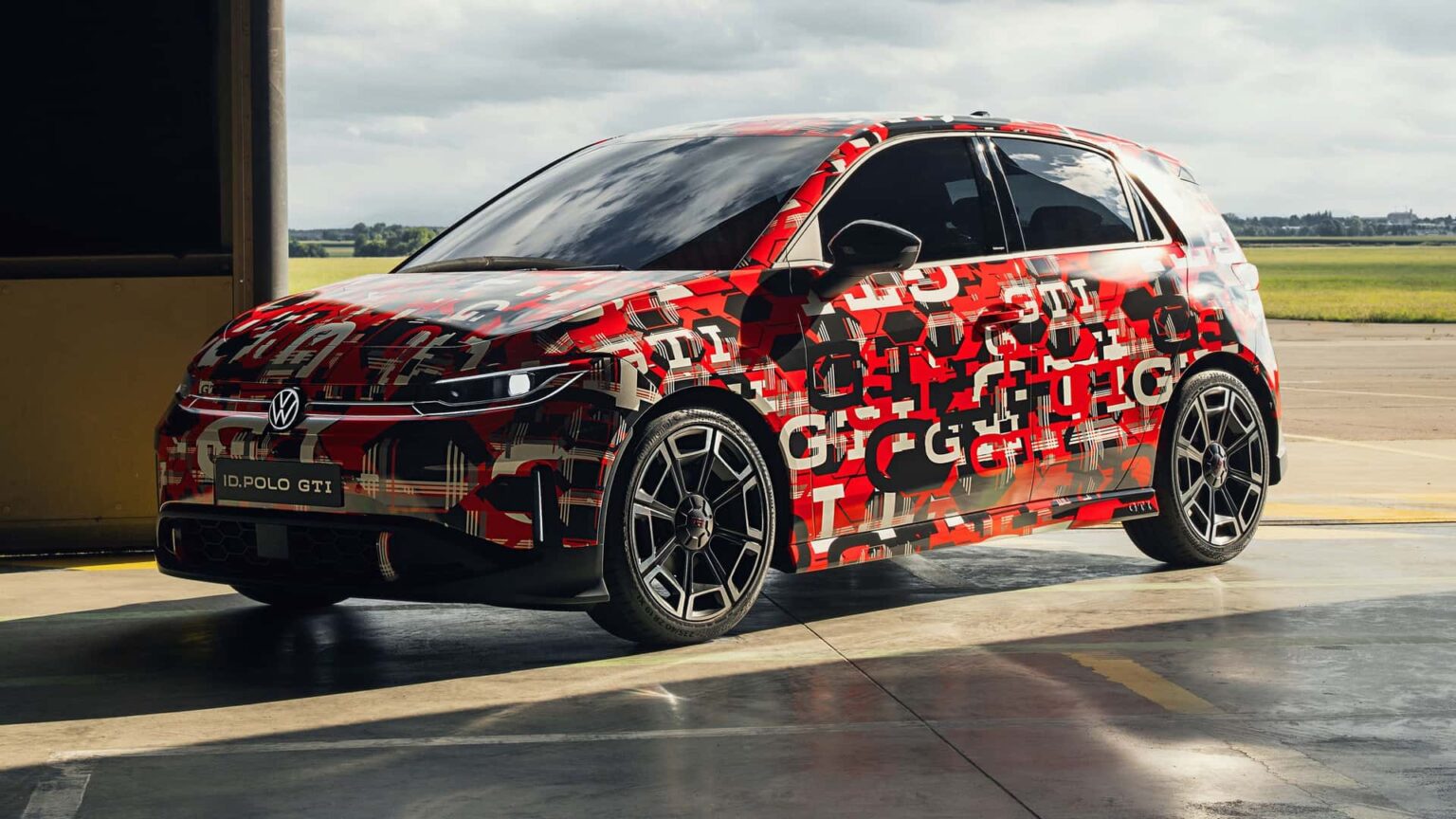Volkswagen is updating its naming strategy for electric models by reverting to proper names, taking a page out of its old playbook. Instead of the “e” suffix previously used on cars like the e-Golf or China’s e-Lavida, Wolfsburg will now use “ID.” Consequently, the 2023 ID.2all concept will launch next year as the ID. Polo. Similarly, the ID. GTI concept will evolve into the ID. Polo GTI production model. Meanwhile, the gasoline-powered Polo will continue unchanged.
The two electric concepts have matured into near-production prototypes, though VW is still keeping them under colorful camouflage. The standard car’s official reveal is scheduled for May 2026. Both disguised subcompact hatchbacks will be displayed next week at the IAA Mobility Show in Munich, alongside a similarly sized electric crossover concept. The regular ID. Polo will go on sale next fall with two battery sizes and three output levels.
17
Source: Volkswagen
Its hotter GTI sibling will arrive before the end of next year with a higher output: 223 horsepower. It won’t be the first GTI without a combustion engine, as Peugeot has already beaten VW to market with the e-208 GTi, a direct rival to the flagship ID. Polo. Electric hot hatches are becoming a thing in Europe, with examples such as the Abarth 500e, Cupra Born VZ, and the lesser-known MG 4 XPower.
All ID. Polo versions will be front-wheel drive, using a single motor mounted at the front. The MEB+ platform underpinning the electric supermini differs from larger models (ID.3 and up), which use either rear- or all-wheel drive. At 159.5 inches (4053 millimeters) long, the electric Polo is nearly the same length as its combustion counterpart. However, it’s slightly wider at 71.5 inches (1816 millimeters) and predictably taller at 60.2 inches (1530 millimeters) due to the battery.
The bespoke EV architecture allowed engineers to stretch the wheelbase to 102.3 inches (2600 millimeters), giving the cabin space comparable to the Golf’s despite the ID. Polo’s smaller footprint. VW highlights standard DC charging for a newly developed battery pack rated at 278 miles (450 kilometers) in the WLTP cycle, at least according to the ID.2all concept.

18
Source: Volkswagen
In Germany, the base ID. Polo will cost under €25,000 (about $29,000 at current exchange rates), with higher trims offering technology usually found in larger cars. VW promises features like automatic lane changes, traffic light recognition, a 360-degree camera, and a parking assistant with a memory function.
The ID. Polo leads VW’s new naming direction. The smaller ID. Every1, unveiled earlier this year as a concept, will enter production in 2027 as a €20,000 ($23,000) model with a new name. It remains unclear whether VW will revive familiar nameplates (Lupo and up! spring to mind) or introduce a fresh designation, though it certainly won’t be ID.1.
CEO Thomas Schäfer says, “The ID. Polo is just the beginning [of] moving our well-known names into the future.” It now seems increasingly likely that the ID.3 will become the ID. Golf, the ID.4 the ID. Tiguan, and the ID.7 the ID. Passat. The move makes sense, as these traditional nameplates carry decades of heritage VW intends to leverage.
Looking further ahead, the question is where VW will go once the combustion era ends, if it ends. Assuming gasoline models will disappear one day, we’re wondering whether the “ID.” prefix will be retired, leaving just Polo, Golf, Passat, and so on. For now, however, “ID.” is needed to distinguish electric models from conventional ones. While the names will align, the vehicles remain mechanically different, built on separate platforms.
Read the full article here



